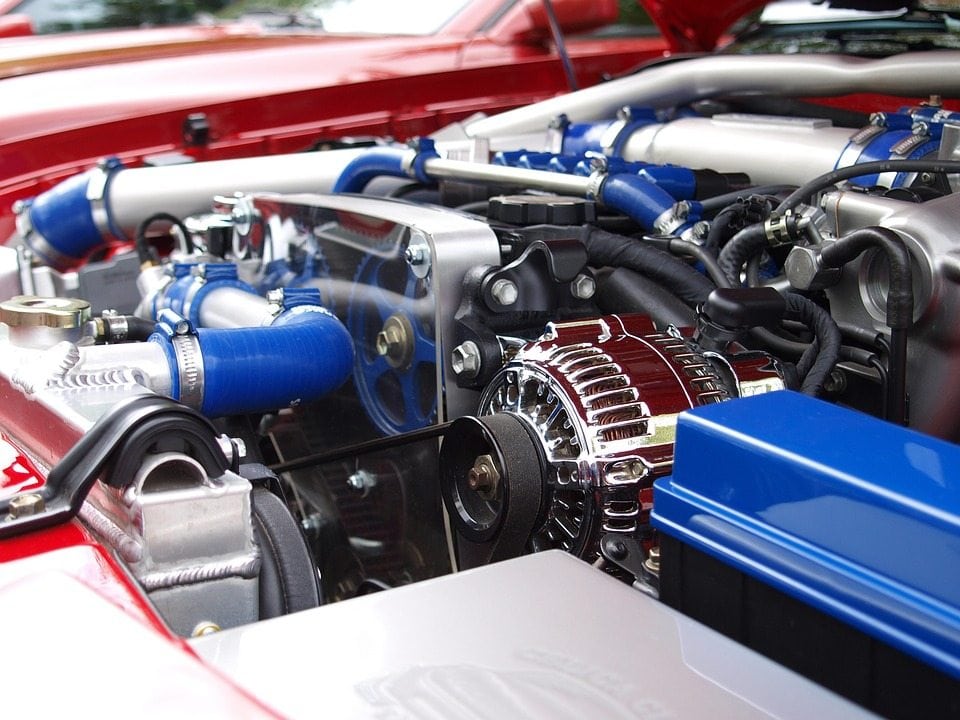The Beach Boys song may have been all about “good vibrations”, but when it comes to cars vibrations are seldom, if ever, good. If you’ve owned a car long enough you have inevitably come across the problem of a rattling engine or strong vibrations when you rev the car, or even when idling. This is one of the most common problems to ail an aging or badly maintained car.
This is not the kind of problem, which presents itself out of the blue. It will creep up on you, with the vibrations getting a little stronger every day, till one day you feel that they will either rattle your brain out of place or make the car just fall apart.
Most of us from the nineties would remember the almost legendary commercial of Lexus talking about this very same problem. Desirous of making inroads into the luxury car market, Toyota Motor Co. aired a commercial, which showed fifteen champagne flutes being balanced on the hood of a Lexus LS 400. The car was shown to be running at more than 140 miles per hour with the engine revving, as the glasses stayed stock still on their perch. No vibrations!
The car was riotously successful in the luxury car market and made an important case for the demand of low vibrations in this segment. There can be a variety of causes for engine vibrations, but all of them, if left unchecked, can cause a great deal of damage.
Busted Sparkplugs
Worn out or faulty sparkplugs can cause the car to misfire or not fire on every cylinder. This is referred to as engine missing. Installing new sparkplugs or solving compression issues can resolve this problem. Check your sparkplugs regularly, if any are dirty and worn, replace them, or give them a thorough clean-up.
Speed Sensitive Vibrations
If you find that your car is vibrating unnaturally at specific speeds, it is usually an out-of-balance wheel. If not, it could be a bent rim, an out-of-round rim or tire, an off-center wheel or hub, or an imbalanced driveshaft. Worn out shock absorbers or a loose part in the suspension or steering linkage can also cause this issue.
This problem usually presents itself at speeds above 45 mph. A simple bubble balancer can in most conditions solve the problem adequately. If the vibration problem does not go away even after rebalancing the wheels it is probably the vehicle’s balance problem and sending the car in for a tune-up would be the best option.
Brake Problems
If your car vibrates on application of brakes then you probably have warped or damaged brake rotors. This causes the ideally lowered surfaces to rise and thus result in vibrations when the brake pads stop the rotor. If you find your car has this problem it would be best to see a brake specialist.
Broken Mounts
When you are idling at a red light, or parked with the engine on and feel strong vibrations you could have a broken vibration isolation mount.
The engine and transmission mounts, over and above securing the components, isolate the vibrating sensation and keep the car running smoothly. A collapsed mount greatly reduces the car’s ability to absorb vibration from the engine or transmission. Collapsed mounts can be the hardest to diagnose.
To do so correctly, have one person sit in the driver’s seat power braking while another checks for excessive motion among the mounts. This can be dangerous when done by novices. It is always a better idea to get the car checked by a mechanic.
If your car starts and drives fine, but begins to exhibit shaking after a short time you can try checking the air filters and fuel filters. If you find them clogged, then get them replaced.
Problems with the Axle Shaft
The axle shaft can get bent with time and can result in a very rough ride. Like all machinery, parts of the car face their own share of wear and tear. These problems can be identified if the intensity of the vibrations increases with your speed. Inspect the drive shaft as well in case it is damaged or bent due to the vibrations.
Your axle can also be damaged due to a crash; in which case make sure your car is thoroughly inspected by a mechanic. Damaged constant-velocity joints too, can cause shaking. If you find the boots and clamps around the axle to be secure and no lubricant is leaking out there is no problem. However, if you find the boots are torn, contaminants may be entering and damaging the joints. For cars with a front-wheel drive, a broken constant-velocity joint means buying new drive axles as well.
If your car shakes and rattles when starting from a dead stop, the vibrations can be caused by anything from loose shock absorbers, spring mounts, ball joints, stabilizer bars, control arm bushings, poorly hung exhaust systems to worn out vibration mounts. Sometimes exhaust rattles transmit through the chassis and feel like engine vibrations. It can even be a loose tire in the trunk rattling about.
There are a number of culprits for bad vibrations, shakes and rattles that your car seems to be making. Having it regularly maintained and serviced is one of the most effective ways to keep your car free of bone jarring vibrations. However, if you find your fifteen-year-old jalopy just doesn’t quit its vibrating, maybe it is time to get yourself a new car.
Author Bio:
Kim Linhart is an industrial writer and experienced blogger and regularly writes for Service Rubber Group. When she’s not writing about autos and driving safety, Kim enjoys traveling with her husband and two lovely kids.



These are really extremely essential tips that every one has to follow for the better performance of the car. All the parts like tires depth, spark plug performance should have to check on regular basis. Thanks a lot for this wonderful guide. I must appreciate you for your wonderful knowledge.